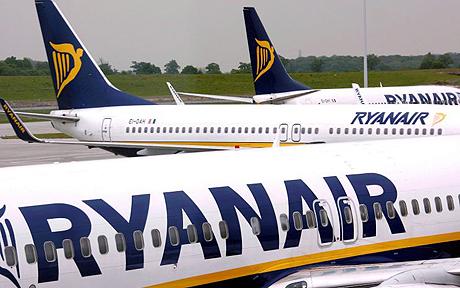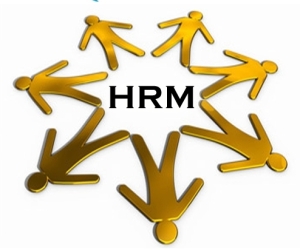Investment Pension Management
Investment Pension Management – Organization strategic plan is a process that identifies and defines the strategic and directive decision making on the resource allocation in order to pursue and achieve its objectives. Direction determination is an advantage and important aspect in the organization. It is because it helps to pursue the avenues and the course of action in dealing with key aspects in the organization.
In this case, the organization strategic planning should capture the vision; mission, values and strategy in order to formulate its end vision. The main reason and rationale for international investments are for diversification purposes and high pension returns. One advantages that international security foreign stocks are volatile as compared to other American stocks. In this way, addition of international stocks will expose the international security portfolio and reduce normal risks without attracting low demands.
Such a position means that a 20% stock international portfolio and a 60% American stock portfolio will attract the same returns and attract lesser risks as compared to a 100% American stock. However, TMP Company should consider the fact that in case the international security market drops sharply; the foreign market correlation will rise significantly. Additionally, TMP Company should consider the negative aspects of international investing which includes attracting high transaction expenses, custody fees expenses, management expenses, operational expenses and tax expenses.
Disadvantages of Investment Pension Management
One disadvantage is the presence or interference of risks. Other risks and expenses include currency and political risks. In this way, the company should use this approach to consider the returns from investing internationally, which have been affected and influenced by movements of currency. It is because currencies can cause high volatility. TMP Company has various investing international options. These options include integrating mutual money of funds that purchase foreign international securities and purchase of foreign direct securities.
This introduces close end finances to purchase foreign international securities. Organization strategic plan managerial process is interconnected to four important functions. These functions include the organization, planning, motivational and control. The only limitations and disadvantages to this would be a lack of liquidity. The other problems and risks associated with a few technical issues in the policy investments. It is necessary to note that investment risks are reflected in the future and not the in real time information, uncertainty in the political arena, custodial and trading difficulties.
Advantages of Investment Pension Management
Expected high returns are an international security advantage. This is because the company international security portfolio intends to ensure that the company gets good returns. The security investments have been identified as a successful endeavor which is sure to bring the company high returns. High returns in the company will put company resources into Action, improve employee efficiency levels, leads to achievement of the organization’s desired goals, builds friendly relationships and ensures stability in the work force.
Direct investments created many dynamics, which are as a result of following foreign rules from foreign international countries. Many research studies have shown that high international investments of up to 60 % can help a great deal in the improvement of returns and risks benefits. Most intellectuals have recommended that in this case, a range of 10% to 30% is introduced as high returns are expected.
The other advantage is that it also considers the emerging markets. It happens because developing countries can enjoy multiple benefits by investing into the emerging markets. Additionally, making purchases in the emerging markets is much easier. It simply means that emerging companies can capture moving cash into attractive international entities.
Another advantage is that the Emerging markets investments also help to allure faster growth in the economy. The company should realize that foreign international securities play a vital diversification part in the business. Adding these equities into the company’s portfolio will achieve fixed incomes and reduce volatility. Another benefit or advantage is diversification’s attributes to domestic market equity within the foreign market equity.
Benefits of adding international securities to pension portfolios is that most investors have future return expectations as one of the key attributes, the investors are more comfortable with an allocation of investments from home markets. TMP should realize that risks can be assessed and calculated from historic fund tracking of errors in the benchmark policing. This risk is related to negative and uncertain effects or impacts for an uncertain potential future. The other problematic approaches on how to handle exceeding funds policies.
It may result to high volatile conditions in the market. The market transient conditions are one of the causes that conform to policies against future risks. The other common risk is the time horizon risk. This risk is related to portfolio a measure towards such risks. It is important to no0te that 100 % of all investment portfolios have risks that is not seen.

Visible and Invisible Investment Risks
Visible and invisible risks can be both an advantage and a disadvantage. This is because it can be corrected early to ensure high returns or cause failure if not identified on time. It is evident that investment policies from pension or security funds mostly do not take the illiquid risks into consideration. Most companies prefer other investments like equity, capital venture and other real estate investments, which is not popular, and, therefore, is appropriately ignored for the purpose of risks assessment.
It has been argued that Financial Crisis globally, has been centered in such securities. The risks that are not visible or that are invisible are acuter as compared to other risks. It is because these risks are not easily recognized. In this case, the company should put more effort into ensuring that the risk assessment takes place accurately and appropriately. The best strategy or key that is used to control invisible risks this risk are to develop risk assessment plans from international, notional instead of using market security values which are derivative from investments.
For instance, consideration of $10 Million strategy for US security equity portfolio run by asset manager s from external quarters that is related to the purpose of the asset appropriator to plan for $50 million of number of index contracts futures. In Consideration to the assessment risk exposures on security funds, the international security trading is successfully completed. The security market is made up of multiple exposures to risks that are related to security funds increasing from many investment factors.
For TMP to successfully implement the various securities investing options, the company should consider integrating strategies for the implementations. These may include:
Portfolio Management Strategies
As a portfolio manager, I realize that challenges and changes are constant especially in complex and volatile international market. In this case, TMP is presented with many different opportunities in the emerging international markets, hedge funds, real estates, derivatives and many other types of investments. However, the company needs to come up with portfolio management strategies to ensure that they stay on top of the investment game. It simply means that the portfolio management strategies will help the company to monitor and shape investments in order to generate high returns and expose excessive investment risks.
The portfolio management strategies are related to examination of fundamental issues related to investment effectiveness and risks reduction. The portfolio gives balanced a view on international markets, institutions, theories, practical applications and other principal concepts. The company should implement active management. This is because active management will ensure constant monitoring of the security investments processes.
Viability of Market Exposures
International security Portfolio management should have market exposures on assessments in terms of standard deviation and volatility. The performance is measured through marketing indices and error tracking. The portfolio may also be compared with other managerial portfolios in the market to ensure that the function objectives in the company are similar. Finally, the adjusted risk model may be introduced. The other effective strategy in portfolio management is the attribution of performance. It involves carrying out of the analysis on the overall manager performance from a financial point of view.
Asset Allocation Strategy
Most times assets allocation can be compared to placing eggs in one bag. It simply means that assets allocation is a single investment or security, which could cause the whole investment package getting, phased out in case the portfolio is not successful or lacks in specific details. In this case, diversification is appropriate to help in investment spreading in order to reduce risks. Assets allocation system is, therefore, an investment system that diversifies investments from securities and spreads the investments into cash, bonds and stocks.
The investment allocation can account for more than 92% of return viability in relation to total holdings in the portfolio. The reason for this is different classes of assets have distinct reactions, history and characteristics in the same conditions within the market. Categorizing the assets can carry out diversifying security investments strategically. Cash, bonds and stocks have equivalently fixed rates under multiple segments that help to provide a basis of diversification to maximize initial returns and, therefore, reduce risks. Fixed and cash rate equivalents contribute to the provision of investment category assets choices. These are the core requirements that guarantee and provide securities on principal investments.
It uses the general consideration of providing moderate returns from lower risks. In this way, funds value is stable, and the investments get assured. To promote assets allocations the employees of the company, and the management should take responsibilities for the investment decision-making. The employees are responsible for information provision and promotion of asset allocations. It means that the employees must be sensitized and made aware of the best practices in strategic investments as an integral and vital part of the company.
Policies Pertaining To Hedging
Hedging is simply a strategic risk management policy that offsets or limits the loss probability from commodity or investments price fluctuations, securities or diverse currencies. It employs many techniques that involve opposite and equal market positions. This technique is utilized to protect the company’s investment capital against inflation effects through high investments of notes, bonds, and shares in securities.
Hedge comes from multiple financial attributes known as instruments, which include insurance, swaps, stocks and contracts forwards. Hedging strategies include currency future contracts, money market currency operations, future interest contracts, forward exchange currency contracts and equity short straddles amongst many others. Headgeable risks are categorized into credit risks, commodity risks, currency risks, interest rate risks, volumetric risks, and equity and volatility risks. The company should, therefore, consider future hedge in the company.
Hedging will allow the company an opportunity to tap into untapped markets. It means that the company could venture into markets with natural prospects and resources to ensure fast economic security growth. Additionally, market frontier economies have the potential to offer the company many opportunities in different investment areas such as investing in other financially efficient markets. Policies pertaining to hedging also help to measure a company’s performance.
The performance is measured through marketing indices and error trackings. The portfolio may also be compared with other managerial portfolios to ensure that the function objectives in the company are similar. Finally, the adjusted risk model may be introduced. Categorizing the assets can carry out diversifying security investments strategically. Cash, bonds and stocks have equivalently fixed rates under multiple segments, which help to provide a basis of diversification to maximize initial returns and, therefore, reduce risks.
It is also virtually important to consider the emerging markets. It is because developing countries can enjoy multiple benefits by investing into the emerging markets. Additionally, making purchases in the emerging markets is much easier. The main reason and rationale for international investments are for diversification purposes and high pension returns. It is vital to note that foreign stocks are volatile as compared to other American stocks. In this way, addition of international stocks will expose the portfolio and reduce normal risks without attracting low demands.
Successful Investment Markets
The company should invest in successful investment markets. The markets should have the probability to provide and allow successful financial security investments. In this way, the company will be able to increase its investments in successful investment markets. Successful investment markets can be a guideline to the company of other successful companies around the globe. This will not only motivate the stakeholders but will also open up this company to participate in successful investments markets.
References
Adler, Michael, and Bernard Dumas. 1983. International Portfolio Choice and Corporation Finance: A Synthesis. Journal of Finance 38, pp. 925-84.
Bailey, Warren, and J. Lim. 1992. Evaluating the Diversification Benefits of the New Country Funds.Journal of Portfolio Management 18, pp. 74–80.
Bonser-Neal, C., G. Brauer, R. Neal, and S. Wheatley. 1990. International Investment Restriction and Closed-End Country Fund Prices. Journal of Finance 45, pp. 523-47.
Chuppe, T., H. Haworth, and M. Watkins. 1989 Global Finance: Causes, Consequences and Prospects for the Future – Investment Pension Management. Global Finance Journal 1, pp. 1-20.
Cooper, Ian, and Evi Kaplanis. 1994. Home Bias in Equity Portfolios, Inflation Hedging, and International Capital Market Equilibrium. Review of Financial Studies 7, pp. 45-60.
Errunza, Viliang, Ked Hogan, and Mao-Wei Hung. 1999. Can the Gains from International Diversification Be Achieved without Trading Abroad?. Forthcoming in Journal of Finance.
Eun, Cheol, Richard Kolodny, and Bruce Resnick. 1991. Performance of U.S.-Based International Mutual Funds. Journal of Portfolio Management 17.pp. 88-94.
Fama, Eugene, and W. G. Schwert. 2000. Asset Returns and Inflation. Journal of Financial Economics 5, pp. 115-46.
Lessard, D. 2000.World, Country and Industry Relationship in Equity Returns: Implications for Risk Reduction through International Diversification. Financial Analyst Journal 32.pp.22-28.
Longin, Francois, and Bruneo Solnik. 1987. Is the Correlation in International Equity Returns Constant?: 1960-1990. Journal of International Money and Finance 14, pp. 3-26.
Merton, R. 1997.A Simple Model of Capital Market Equilibrium with Incomplete Information. Journal of Finance 42 (1987), pp. 483-5 10.
Investment Pension Management Relevant Posts
International Financial Management
Click Here To View Finance Dissertation Topics
If you enjoyed reading this post on investment pension management, I would be very grateful if you could help spread this knowledge by emailing this post to a friend, or sharing it on Twitter or Facebook. Thank you.




